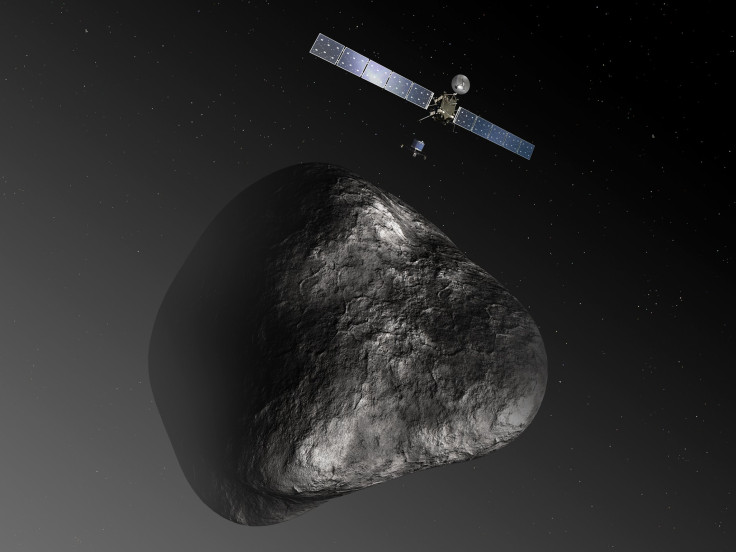‘Wake Up Rosetta’ Live Stream: Watch The Comet-Chasing Satellite Awaken From Deep-Space Hibernation

Rosetta, the European Space Agency’s comet-chasing satellite, is getting a very public wake-up call on Jan. 20. The “Wake Up Rosetta” live stream event will begin at 4:15 a.m. EST.
After spending close to three years in deep-space hibernation, the “Wake Up Rosetta” campaign signals the start of the final leg of the satellite’s mission. The ESA will awaken Rosetta at 4:00 a.m. EST, officially emerging from hibernation and beginning its mission to chase down a comet.
Rosetta was first launched in 2004 and was soon put into position in deep space and was shut down, save for the satellite’s computer and heating system, on June 8, 2011. The satellite’s internal alarm clock will go off at 4:00 a.m. EST on Jan. 20 and ESA will soon reestablish communication with Rosetta. After its alarm goes off, ESA expects it will take seven hours before Rosetta begins communicating with Earth, approximately 7:30 a.m. EST.
ESA said in a statement regarding Rosetta’s wake up itinerary, “This process that includes switching on the star trackers, slowing the spacecraft's hibernation spin and switching on and warming up certain systems. Once it has exited from hibernation, the spacecraft will switch itself into 'safe mode' - a standard mode of operation that ensures the basic functionality of the satellite. This, too, comprises several procedures, at the end of which Rosetta will orient itself into Earth-pointing mode and switch the transmitter on. This will all take about six hours.” The ESA has had no contact with Rosetta since 2004.
Once awake, Rosetta will soon chase down Comet 67P/Churyumov–Gerasimenko. Rosetta will stay in close orbit with the comet and ESA will deploy the Philae lander in November. If successful, it would be the first time a spacecraft has landed on a comet. Rosetta will spend 16 months closely observing the comet and carries 11 science instrument packages that will be used to identify the chemical composition of the comet as well as changes in temperature and gas activity as the object heats up.
The Philae lander will use harpoons to latch on to comet 67p’s nucleus. From there the lander will drill into the comet and also collect subsurface samples.
still sleeping
— ESA Rosetta Mission (@ESA_Rosetta) December 3, 2013ESA has set up a social media campaign that includes a dedicated blog, Facebook, Twitter and user-submitted videos. For fan submissions, the grand prize will be a VIP trip to the European Space Operations Center in November as ESA attempts to land Philae onto a comet.
The “Wake Up Rosetta” live stream begins at 4:15 a.m. EST and can be viewed below.
© Copyright IBTimes 2024. All rights reserved.






















